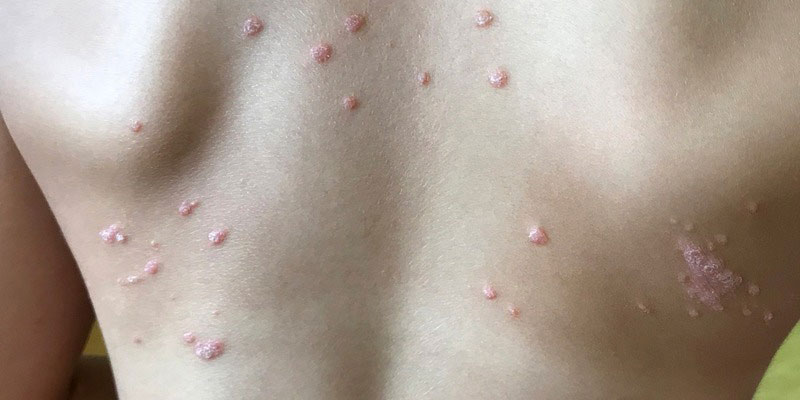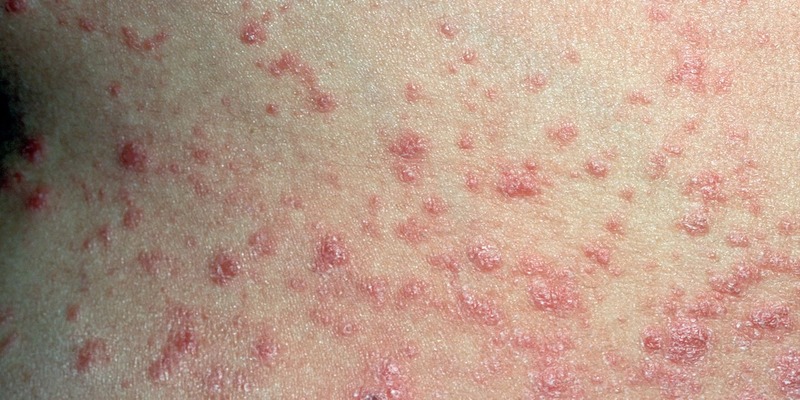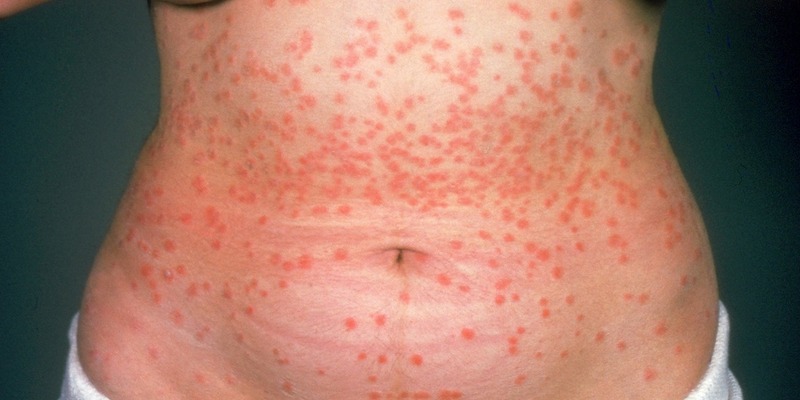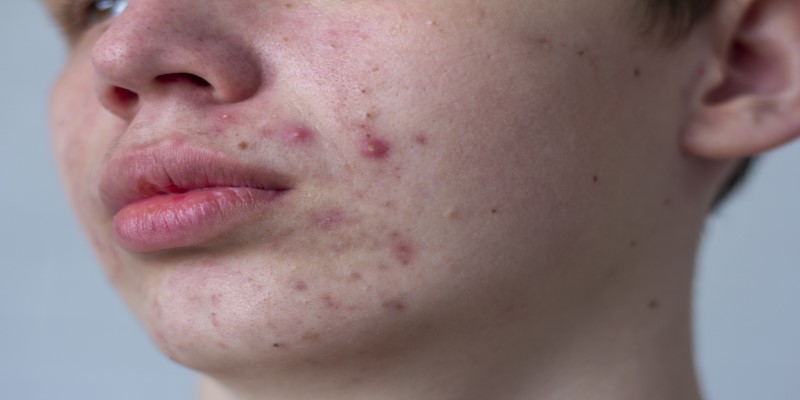
Psoriasis is a skin disorder characterized by inflammation, which results in pigmentation and discomfort. There are several psoriasis subtypes. Symptoms are often elevated, red or pink areas of skin on light and fair skin tones, commonly accompanied by a silvery scale.
On medium skin tones, it may resemble salmon-colored with silvery-white scales. The patches might look violet or dark brown on those with darker skin. "Guttate" originates from the Latin word meaning "drop."
The guttate kind of psoriasis is the second most frequent. However, it is still uncommon in youngsters. According to the National Psoriasis Foundation, only around 8 percent of those who have psoriasis in the United States actually have the guttate variant (NSF). Guttate psoriasis is often diagnosed in young people.
Guttate Psoriasis Symptoms: What Are They?

Guttate psoriasis flare-ups are typically abrupt. Common symptoms of breakouts include the appearance of increasingly large and darkened versions of previously hardly noticeable spots. They may spread across a wide area or stay in localized areas.
Lesions of guttate psoriasis often take the following forms:
- diminutive
- ranging from red to brown on different skin tones
- separate from each other
- often seen on the trunk and limbs
- tiny, drop-shaped lesions
The prognosis for guttate psoriasis varies. Guttate psoriasis may often be cured on its own within a few weeks.
Why Does Guttate Psoriasis Occur?
The specific etiology of psoriasis is unknown, although experts suspect a mix of genetic, environmental, and immune system variables.
How Does The Body's Immune System Play A Role?
Psoriasis has been recognized by scientists as an immune-mediated illness for decades. It is believed that an aberrant immunological response is the root cause of immune-mediated diseases.
When the immune system is overactive, it might mistakenly target healthy cells as though they were pathogens. The fast proliferation of skin cells characterizes psoriasis due to an immune system attack. The result is the psoriasis hallmarks of skin redness and flaking.
What Causes Guttate Psoriasis?

Researchers have found a possible correlation between bacterial or viral infections and the start of guttate psoriasis, although the exact origin of the disorder remains unknown. Notably, tonsillitis and strep throat are common triggers for guttate psoriasis in children. There is typically an infection 1–3 weeks before developing guttate psoriasis.
A flare-up of guttate psoriasis can be brought on by several other things, like as
- damage to the skin, such as a cut, bug bite, or burn
- sunburn
- stress
- beta-blockers and antimalarials
- smoking
How Severe Is Guttate Psoriasis, And What Are Its Stages?
All varieties of psoriasis, including guttate psoriasis, may be divided into three distinct phases of severity. The NPF describes these phases as follows:
- Mild. Lesions make up less than 3% of your skin's surface.
- Moderate. Lesions encompass between 3 and 10 percent of your skin.
- Severe. Skin lesions might cover more than 10% of the body.
The severity of your symptoms and the extent to which your skin has lesions are two indicators that can help a dermatologist determine the stage of your ailment. The Physician's Global Assessment (PGA) and the Psoriasis Area and Severity Index (PASI) are two common instruments that could be used (PASI).
Guttate Psoriasis: How Is It Diagnosed?
An examination by a medical professional might reveal the presence of guttate psoriasis. If they can't accurately diagnose your condition, they will likely suggest that you see a dermatologist. Your dermatologist is going to look at your skin and make notes about any problems they find.
Treatment progress following diagnosis may be tracked with this map. If they suspect an allergy, for example, they'll want to know your medical history to make sure. Some people with guttate psoriasis develop severe allergic responses to the antibiotics prescribed to treat the underlying illness.
A dermatologist often diagnoses guttate psoriasis after a thorough examination of the skin. While guttate psoriasis is the most common kind, it is possible to confuse it with the following:
- tinea corporis
- secondary syphilis
- Epidermitis nummulare
- rosacea
A dermatologist may order a skin biopsy to assist the kind of psoriasis and rule out alternative causes of the skin lesions.
What Can Be Done To Cure Guttate Psoriasis?
The degree of guttate psoriasis affects the treatment options available. There may be no need for therapy if this is the first time you've had symptoms. Waiting it out to see whether guttate psoriasis goes away is a viable option in certain situations.
Discuss your diagnosis and treatment options with a dermatologist before making any final decisions. Plaque psoriasis is a more severe form of the ailment and requires treatment if it returns.



